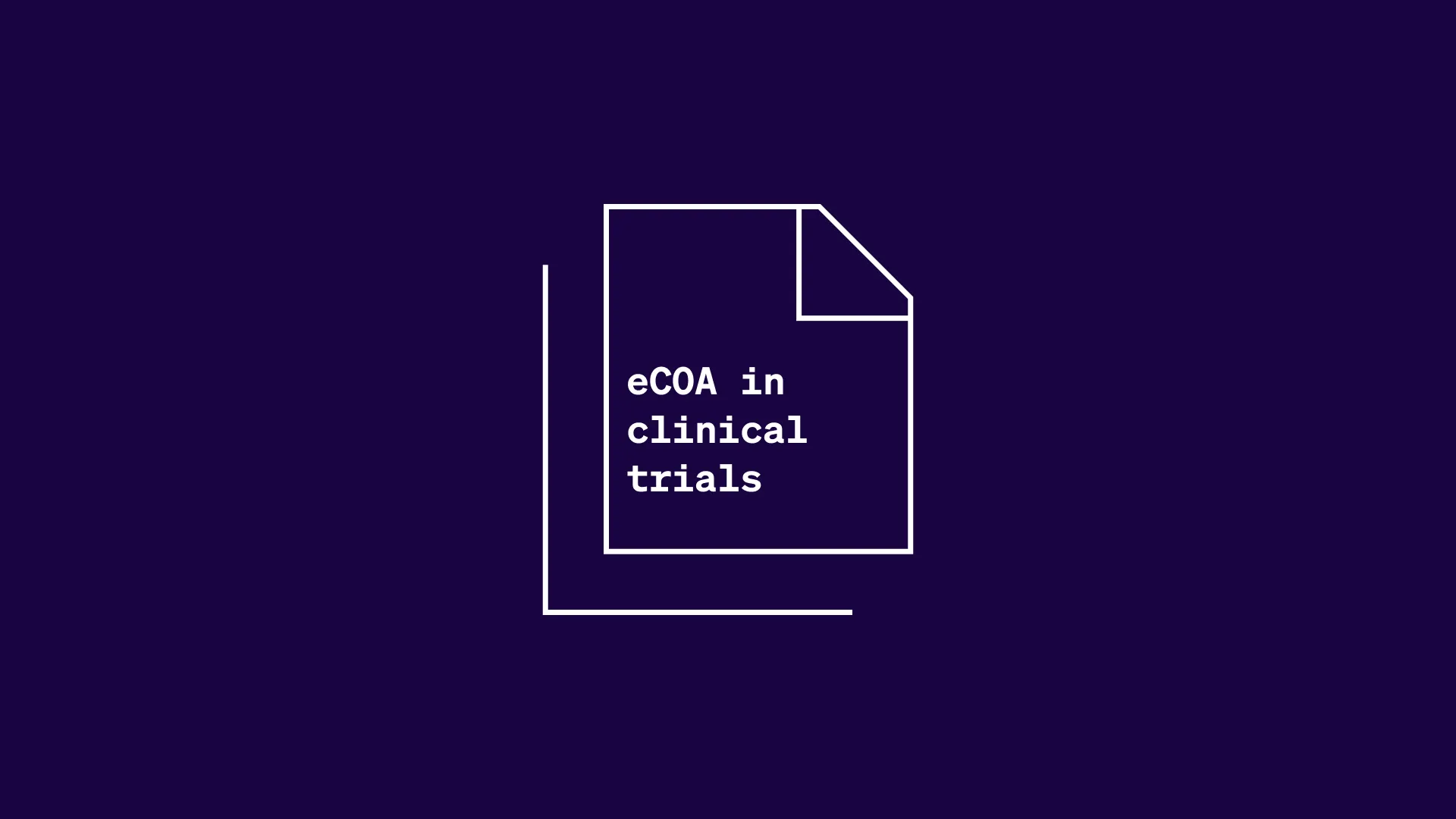By: Musaddiq Khan VP, Customer Value, Digital Outcomes and TA Strategy
The landscape of clinical trials is undergoing a significant transformation as digital measures and digital health technologies (DHTs) continue to evolve and prove their worth.
As of December 2023, approximately 1,550 clinical trials worldwide utilized wearable devices, representing about 2% of all trials. While this percentage may seem small, it marks a steady increase since 2014, and the momentum is set to accelerate.
This growth is driven by two key factors: the increasing demand for decentralized clinical trials (DCTs) and their elements (DCT elements), as well as increasing from supportive regulatory guidelines. Agencies like the U.S. Food and Drug Administration (FDA) and the European Medicines Agency (EMA) have issued guidelines for integrating DHTs in clinical research. A notable milestone was reached in June 2022 when the FDA incorporated DHTs into the strategic framework of its five-year action plan for the ALS Act.
Recent research from the Tufts Center for the Study of Drug Development (CSDD) and the Digital Medicine Society (DiME) has illuminated the substantial return on investment (ROI) of digital endpoints in clinical trials. But what exactly are these digital measures?
Digital measures: A new frontier in clinical trial data collection
Digital measures capture data through electronic devices such as sensors, wearables, and electronic patient-reported outcomes (ePROs). These tools provide a subjective and objective window into a patient's health, capturing both healthy states and deviations that indicate illness, treatment response, or potential safety risks.
The rise of digital data has been exponential, with a compound annual growth rate (CAGR) of approximately 34% from 2000 through 2017. This surge has driven the development of new digital measurement tools that offer objective, quantifiable measures of physiology, behavior, and environment.
The Game-changer: continuous data streams
One of the most significant advantages of digital measures is their ability to generate continuous data streams, offering several benefits over traditional, point-in-time data collection methods:
- Real-time monitoring: Unlike clinic visits, which capture data at specific intervals, continuous streams provide a more complete picture by capturing real-time health information. This can help researchers to detect better subtle changes or trends that may otherwise be missed. Imagine being able to monitor a participant's heart rate or blood sugar levels throughout the day instead of just during clinic visits.
- Early intervention: With a constant data flow, researchers can quickly identify potential safety concerns or side effects. This enables timely interventions, potentially mitigating adverse outcomes and improving participant safety.
- Improved adherence monitoring: Digital measures can electronically track medication use or treatment adherence. This allows researchers to identify participants struggling to stick to the protocol, enabling targeted interventions to improve compliance.
- Enhanced understanding of disease: Continuous data streams can reveal patterns and fluctuations in a participant's health that wouldn't be evident with limited snapshots. This more profound understanding of disease progression and treatment effects can lead to more effective therapies and personalized medicine approaches.
- Reduced participant burden: Traditional data collection often relies on surveys or questionnaires, which can be time-consuming and burdensome for participants. Digital measures can automate data collection, minimizing participant involvement and improving the overall experience.
Impressive ROI with digital measures
The latest Tufts CSDD and DiME assessment reveals compelling ROI figures:
For Phase 2 trials:
- Increase in eNPV (earned net present value): $2.2 million to $3.3 million
- ROI: 32% to 48%
For Phase 3 trials:
- eNPV: $27 million to $48 million
- ROI: 400% to 700% (4 to 7 times the investment)
Reduced Trial Duration and Sample Sizes
- Digital endpoints are associated with shorter trial durations:
Phase 2 duration reductions:
- Cardiovascular trials: 3.5 months
- CNS trials: 4.2 months
- Diabetes trials: 3.3 months
Phase 3 duration reductions:
- Cardiovascular trials: 4.9 months
- CNS trials: 5.2 months
- Diabetes trials: 4.0 months
Moreover, digital measures enable smaller trial sizes. For Phase 2 trials, mean enrollment sizes were lower for the central nervous system and diabetes trials (87.4 and 73.0 subjects on average) when leveraging digital endpoints.
A striking example comes from an NIH-published study on Duchenne Muscular Dystrophy trials. The research shows that wearable technology and digital endpoints can reduce the necessary sample size of participants by up to 70%.
The Importance of focused measurement
While continuous data streams offer numerous benefits, focusing on the right digital measures is crucial. Overwhelming participants with unnecessary data collection can create noise, burden participants, and distract them from valuable insights. Carefully selecting digital measures that directly align with study objectives ensures a more streamlined and participant-friendly experience while gathering the most impactful data.
Unified platforms and frameworks are needed
With data flowing from multiple systems like electronic data capture, ePROs, and wearables, a unified platform architecture is essential. This central hub automatically integrates disparate data types into a cohesive system, standardizing heterogeneous data and creating a consistent framework for analysis across multiple studies.
In March of this year, researchers from Harvard-MIT Center for Regulatory Science, Genentech, Roche, Syneos, and others laid the foundation for a framework enabling researchers to compare different digital tools that measure the same concept. Comparative analysis is beneficial to sponsors and CROs as it saves time and effort in helping understand what measures are the best fit for certain conditions, helping streamline the development of new clinical trials.
Medable’s digital measure experience and partnership with Massimo
Medable has integrated Masimo’s MightySat® Rx pulse oximeter into its evidence-generation platform for eight big-pharma-sponsored clinical trials spanning 25 countries, including over 3,000 patients and two oncology indications in lung and breast cancer.
The device integration eliminates significant travel burdens from often very sick patients while empowering them to participate in potentially lifesaving clinical trials. With this partnership, Medable also enables both subjective data capture – via humans through Medable’s eCOA+ solution – and objective data capture via Masimo’s connected sensors for multifaceted, deeper data analysis in trials.
Dr. Daniel Cantillon, Chief Medical Officer of Masimo, explains: "With continuous and on-demand monitoring of biometrics, electronic diaries, and even technologies like smart bottles or smart pills, study teams can get more reliable data in real time, from a variety of sources."
As a leader in the digital clinical trial space, Medable is uniquely positioned to help sponsors deliver these transformative technologies. With a comprehensive, unified platform architecture, Medable offers the complete suite of tools necessary to implement digital measures effectively across various trial types and therapeutic areas.
Pamela Tenaerts, our Chief Science Officer, has been working with organizations seeking to implement measures for close to a decade and has published several peer-reviewed research articles on the subject.
Should you have any questions for Pam or myself, click here, and we’d be happy to chat with you about the power, use cases, and potential of digital measures.
Embracing the digital future of clinical trials
Digital measures and endpoints are not just promising innovations on the horizon – they're actively transforming clinical research today. The impressive ROI figures, reduced trial durations, and smaller sample sizes demonstrate the tangible benefits of integrating digital health technologies into clinical trials.
By leveraging continuous data streams, focused measurements, and unified platform architectures, sponsors and CROs can significantly enhance the efficiency and effectiveness of their trials. This translates to cost savings and faster time-to-market and improves the overall experience for trial participants.
As the field continues to evolve, partnerships between technology providers like Medable and device manufacturers such as Masimo are paving the way for even more innovative applications. These collaborations are crucial in developing comprehensive solutions to address modern clinical trials' complex needs.
The future of clinical research is undoubtedly digital. As regulatory bodies continue to provide supportive guidelines and frameworks, we can expect to see an acceleration in adopting digital measures across various therapeutic areas. This digital transformation promises to streamline the drug development process and bring life-changing treatments to patients faster and more efficiently than ever before.
For sponsors and CROs looking to stay at the forefront of this revolution, embracing digital measures and partnering with experienced providers like Medable is no longer just an option – it's becoming a necessity. By doing so, they can position themselves to reap the full benefits of this digital paradigm shift, ultimately contributing to better patient outcomes and advancing medical science.






.webp)


